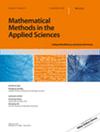具有涡量的三维轴对称可压缩射流自由边界的凹凸性
IF 1.8
3区 数学
Q1 MATHEMATICS, APPLIED
引用次数: 0
摘要
本文在前人建立三维大涡度轴对称可压缩射流问题亚音速解的基础上,进一步研究了轴对称可压缩旋转射流自由边界的几何性质。更确切地说,如果喷嘴对流体是凹的,我们证明了射流的自由边界对流体是严格凸的。此外,整个流体区域的轴向速度为正。本文章由计算机程序翻译,如有差异,请以英文原文为准。
Convexity of the Free Boundary for Three-Dimensional Axisymmetric Compressible Jet Flow With Vorticity
Building upon the previous work, which established the subsonic solution to the three-dimensional axisymmetric compressible jet problem with large vorticity, this paper conducts a further study on the geometric property of the free boundary for the axisymmetric compressible rotational jet flow. More precisely, if the nozzle is concave to the fluid, we prove that the free boundary of the jet flow is strictly convex to the fluid. Additionally, the axial velocity in the whole fluid region is shown to be positive.
求助全文
通过发布文献求助,成功后即可免费获取论文全文。
去求助
来源期刊
CiteScore
4.90
自引率
6.90%
发文量
798
审稿时长
6 months
期刊介绍:
Mathematical Methods in the Applied Sciences publishes papers dealing with new mathematical methods for the consideration of linear and non-linear, direct and inverse problems for physical relevant processes over time- and space- varying media under certain initial, boundary, transition conditions etc. Papers dealing with biomathematical content, population dynamics and network problems are most welcome.
Mathematical Methods in the Applied Sciences is an interdisciplinary journal: therefore, all manuscripts must be written to be accessible to a broad scientific but mathematically advanced audience. All papers must contain carefully written introduction and conclusion sections, which should include a clear exposition of the underlying scientific problem, a summary of the mathematical results and the tools used in deriving the results. Furthermore, the scientific importance of the manuscript and its conclusions should be made clear. Papers dealing with numerical processes or which contain only the application of well established methods will not be accepted.
Because of the broad scope of the journal, authors should minimize the use of technical jargon from their subfield in order to increase the accessibility of their paper and appeal to a wider readership. If technical terms are necessary, authors should define them clearly so that the main ideas are understandable also to readers not working in the same subfield.

 求助内容:
求助内容: 应助结果提醒方式:
应助结果提醒方式:


